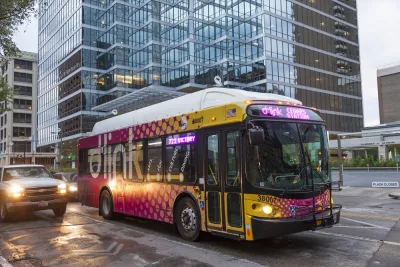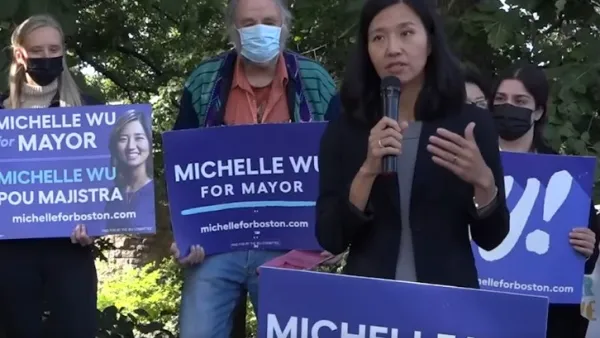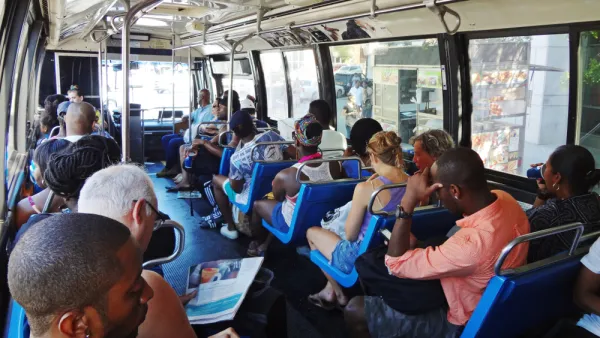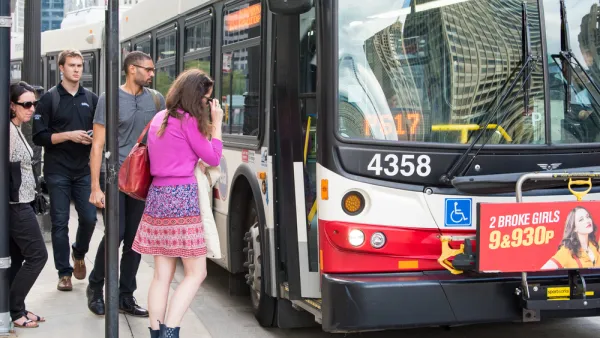While autonomous vehicles still face regulatory and technical challenges, investment in basic transportation infrastructure like buses and bike lanes can go a long way toward improving safety and taking cars off the road.

Despite rosy predictions that autonomous vehicles would rule American roads by now, writes Jacob Silverman in The New Republic, the technology still faces plenty of challenges, signaled in part by major ride-sharing companies shedding their autonomous vehicle divisions. "Across the industry, autonomous vehicle efforts have proven to be stubbornly difficult to bring to fruition, consuming billions of R&D dollars and thousands of engineering hours. Meanwhile, the infrastructure needed to support autonomous cars—government investment in roads, highways, communications, along with proper regulatory oversight—remains inadequate to the challenge." But in order to increase safety on roads, "[w]hat we need are not more energy-efficient cars or self-driving cars … but fewer cars entirely," argues SIlverman.
"In contrast to all the hype and expense of autonomous vehicles—along with the regulatory and technical and economic uncertainty—bicycles, sidewalks, and public transport work exceedingly well. They are known quantities that can be strengthened and made more accessible with a fraction of the resources that have been poured into A.V. research. They are safe and enhance the urban experience. They contribute few, if any, emissions and don’t enrich a handful of oligarchs at the expense of the common interest."
Instead of investing in "very expensive and glitzy pilot projects" that work, at most, as tourist attractions, Silverman proposes that "a better way of saving lives is to have fewer cars on the road, replaced by mass transit and other public options."
FULL STORY: Forget Tech Bro Fantasies of Self-Driving Cars and Just Invest in Buses Already

Analysis: Cybertruck Fatality Rate Far Exceeds That of Ford Pinto
The Tesla Cybertruck was recalled seven times last year.

National Parks Layoffs Will Cause Communities to Lose Billions
Thousands of essential park workers were laid off this week, just before the busy spring break season.

Retro-silient?: America’s First “Eco-burb,” The Woodlands Turns 50
A master-planned community north of Houston offers lessons on green infrastructure and resilient design, but falls short of its founder’s lofty affordability and walkability goals.

Test News Post 1
This is a summary

Analysis: Cybertruck Fatality Rate Far Exceeds That of Ford Pinto
The Tesla Cybertruck was recalled seven times last year.

Test News Headline 46
Test for the image on the front page.
Urban Design for Planners 1: Software Tools
This six-course series explores essential urban design concepts using open source software and equips planners with the tools they need to participate fully in the urban design process.
Planning for Universal Design
Learn the tools for implementing Universal Design in planning regulations.
EMC Planning Group, Inc.
Planetizen
Planetizen
Mpact (formerly Rail~Volution)
Great Falls Development Authority, Inc.
HUDs Office of Policy Development and Research
NYU Wagner Graduate School of Public Service




























